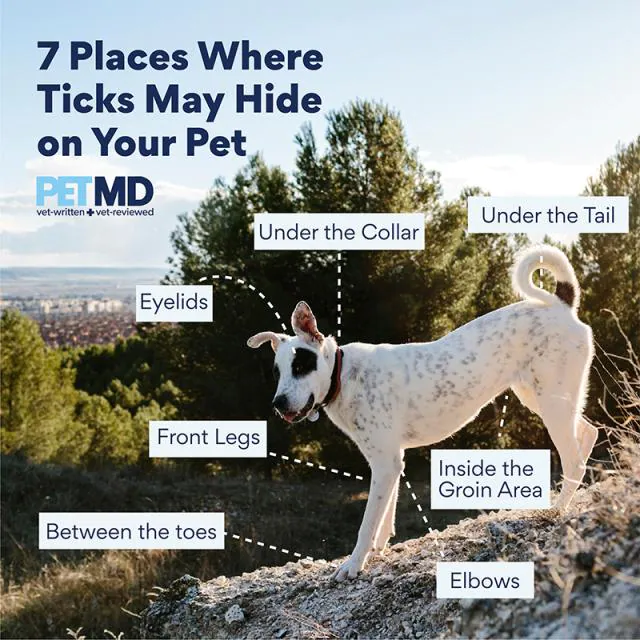Tick Talk
Avoid Getting Ticks
District personnel once collected 0ver 120 ticks from the first 1/4 mile of the Cold Springs Trail! When venturing outdoors to enjoy our local trails and wilderness areas, be sure to take these precautions to avoid picking up these unwanted hitchhikers:
- Wear light-colored clothing, which makes it easier to spot ticks.
- If possible, wear long pants, tucked into your socks, and long-sleeved shirts.
- Use an EPA-approved repellent. Be sure to follow the label directions for proper use.
- Stay on marked trails, keep away from tall grass and avoid contact with vegetation where ticks may be waiting.
- Logs, tree stumps, and leaf litter can be infested with ticks. Try to avoid sitting/resting on these, otherwise be extra careful if you do sit or rest on them.
- Periodically check yourself and others for ticks during your outing. Don't forget to check your pets, backpacks, and other accessories, as well.
- When you get home; Do a thorough tick check. Taking a shower can help remove any ticks you may have missed. Wash your hiking clothes as soon as possible and dry them in a dryer.
- Live ticks that are not attached can be discarded by placing them in rubbing alcohol, hand sanitizer or soapy water.

More detailed information about ticks and the diseases they carry can be found by visiting these sites:
U.S. Centers for Disease Control: All things tick: How to remove them, Lyme disease and other diseases they carry and more...
U.S. Environmental Protection Agency: Repellents: Everything you need to know
University of California, Berekely: Watch where you sit!
California Department of Public Health: Lyme Disease; How not to get diseases from ticks; Diseases you can get from ticks
Testing Ticks for Lyme bacteria

Tick Larvae
The tick life cycle has 4 stages: Egg, larva, nymph, adult. Tick nymphs and larvae are very tiny and can be easily overlooked when doing a tick check. How tiny are tick larvae? About the size of a poppy seed or less! Look at this poppy seed muffin on which someone has planted several larval ticks. How many larvae can you find? Check further below on this page to see where they are.

Tick Flagging and Dragging
by Karen Schultz, District Vector Biologist Technician.
Two common methods of collecting ticks are flagging and dragging. Rulison, et al. (1), give a great description: “Flagging involves sweeping a cloth material (i.e., flannel, cotton) attached like a flag to a hand-held pole or dowel and swept through leaf litter or vegetation. Dragging involves pulling the equivalent material behind the investigator, typically by rope attached to a basal pole, with the pole horizontal and perpendicular to the direction of movement.” Ticks questing for a host wait on the edges of vegetation with their legs reaching out. They grab onto the material as it sweeps by. The material is checked about every 10 meters, and ticks are placed in vials of alcohol with a forceps. Following a 1993 paper written by the current chief of the CDPH Vector Borne Disease Section (2), it has become common practice to sample mainly on the uphill side of a trail. Later papers describe how ticks crawl downhill until they come to a trail and then climb up vegetation next to the trail.
1. Rulison EL, Kuczaj I, Pang G, Hickling GJ, Tsao JI, Ginsberg HS. Flagging versus dragging as sampling methods for nymphal Ixodes scapularis (Acari: Ixodidae). J Vector Ecol. 2013 Jun;38(1):163-7. doi: 10.1111/j.1948-7134.2013.12022.x.
2. Kramer VL, Beesley C. Temporal and spatial distribution of Ixodes pacificus and Dermacentor occidentalis (Acari: Ixodidae) and prevalence of Borrelia burgdorferi in Contra Costa County, California. J Med Entomol. 1993. May;30(3):549-54. doi: 10.1093/jmedent/30.3.549.



Lyme Disease and Dogs
People can heed the advice to avoid brushing up against vegetation to reduce exposure to ticks, but most dogs don’t understand. Dogs need their human buddies to protect them from ticks and diseases like Lyme disease. As with human Lyme disease, the black-legged tick needs to be attached for at least 36 hours to transmit the bacteria. The most common sign of Lyme disease in dogs is unexplained limping. Dogs may also have a fever or refuse food. The disease is treatable with antibiotics. Untreated canine Lyme disease can cause kidney damage or arthritis. There are many prescription and over-the-counter treatments available for dogs to combat ticks as well as fleas. Oral treatments are (usually) chewable tablets given to a dog monthly or quarterly. Once the substance is in the dog’s system, it will kill a blood-feeding bug soon after it bites. Some oral treatments contain spinosad, which is the active ingredient in one of the mosquito larvicides that the District deploys. There are also treated collars and topical treatments that repel and/or kill pests. Whether treated or not, dogs should be checked for ticks soon after visiting a suspected tick habitat. Veterinarian Dr. Jennifer Coates of PetMD says the best way to check for ticks is to “run your hands through your dog’s fur against the direction it normally lays. This allows you to see down to the skin, even on very furry dogs.” Ticks should be removed by grasping the tick close to the dog’s skin with tweezers and pulling straight out (as shown here).

Be on the Lookout!
Adult Pacific coast ticks (Dermacentor occidentalis) are active and generally abundant throughout the non-summer months. They'll be especially abundant where there's coastal chaparral and tall grasses which is common for some of our popular local trails (More Mesa, Ellwood bluffs, Douglas Family Preserve, etc.). Take extra time and care to check your dogs (and yourself!) for ticks that may have latched on while you're out walking and enjoying the scenery.
